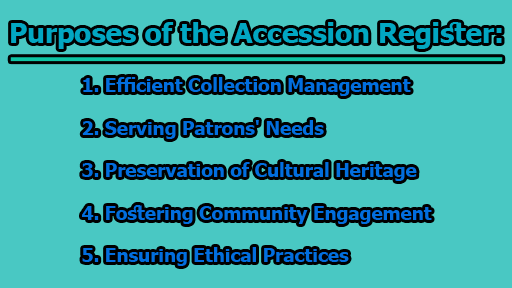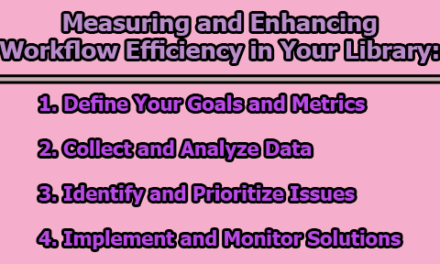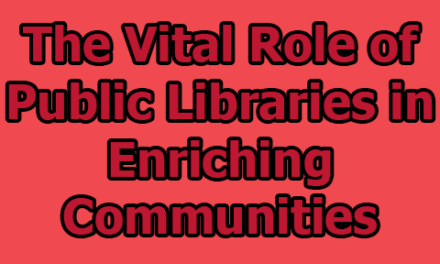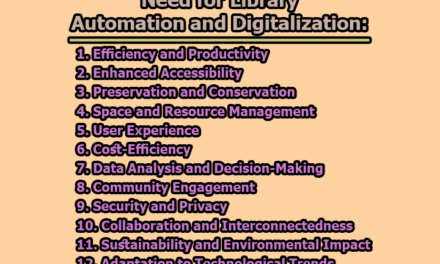The Accession Register, a cornerstone of library and archive management, stands as a testament to meticulous record-keeping and stewardship of cultural and historical heritage. Its significance transcends mere documentation, as it serves as the bedrock upon which these institutions build their collections, ensuring accountability, transparency, and ethical practices. With multifaceted functions that encompass recording acquisitions, tracking usage, identifying gaps, managing donations, and providing legal documentation, the Accession Register plays a pivotal role in preserving knowledge, fostering community engagement, and safeguarding the treasures housed within libraries and archives. In the rest of this article, we are going to learn about the definition, importance, functions, and purposes of the accession register.
Definitions of Accession Register:
Let’s explore different perspectives and definitions of the Accession Register:
Archivist’s Lens: The Accession Register, from an archivist’s perspective, is the sacred ledger that chronicles the institutional journey through time. It is the hallowed document where each item of historical significance, every artifact of cultural value, and every piece of documentary heritage enters into the archives’ custody. It is a meticulous record-keeper that safeguards the lineage of the past for the enlightenment of future generations.
Librarian’s Insight: For librarians, the Accession Register is akin to a library’s heartbeat. It is the living document that breathes life into the collection. With each new addition of books, manuscripts, or periodicals, the register beats anew. It is the cataloger’s canvas, capturing the essence of every volume with titles, authors, and publication dates. It is the compass guiding patrons through the labyrinth of knowledge, ensuring that no literary gem is lost in the vast sea of books.
Historian’s Perspective: To historians, the Accession Register is a time capsule. It is the key to unraveling the enigmas of the past. It is the meticulous scribe that documents the artifacts, letters, and manuscripts that whisper tales of bygone eras. Each entry is a portal to a different epoch, offering insights into the lives, ideas, and events that shaped history.
Legal Safeguard: In the eyes of the law, the Accession Register is the shield of ownership. It is the evidentiary fortress that safeguards an institution’s claim to its treasures. In cases of theft, disputes, or provenance investigations, it is the unimpeachable witness. With its records of acquisition dates, it stands as a sentinel against challenges to rightful possession.
Transparency Advocate: Advocates of transparency hail the Accession Register as the epitome of openness and accountability. It is the beacon of transparency in acquisition practices. It is the guardian of ethical stewardship, ensuring that each addition to the collection is documented with clarity. It is a testament to the institution’s commitment to openness in the management of cultural and historical heritage.
Community Engagement Tool: For community-minded institutions, the Accession Register is a bridge. It is the platform where patrons and donors unite with the institution. Through its pages, donors are acknowledged, their contributions celebrated. It fosters community engagement, creating a sense of shared ownership and pride in the institution’s mission.
Technological Enabler: In the digital age, the Accession Register transforms into a technological marvel. It is the database administrator’s canvas, where data fields and algorithms replace ink and parchment. It is the gatekeeper of a digitized world, ensuring that electronic records of acquisitions are secure, searchable, and accessible across the digital landscape.
In each of these perspectives, the Accession Register emerges as a symbol of preservation, knowledge dissemination, transparency, and community engagement. It stands as a testament to the enduring commitment of institutions to their missions, whether it be the preservation of cultural heritage, the dissemination of knowledge, or the pursuit of historical truth.
Importance of the Accession Register:
The importance of the accession register cannot be overstated, as it serves as the bedrock upon which these institutions build their collections, uphold ethical standards, and ensure transparency. Here, we delve into the multifaceted importance of the Accession Register:
- Foundation of Collection Management:
- Central Record: The Accession Register is the primary record-keeping system for all materials acquired by a library or archive. It provides an authoritative and structured record of every item entering the collection, establishing a solid foundation for cataloging, organizing, and managing materials.
- Organizational Backbone: It serves as the backbone of collection management, helping institutions maintain order in their vast and diverse holdings. Without this record, libraries and archives would struggle to keep track of their acquisitions, leading to disorganization and inefficiency.
- Accountability and Transparency:
- Accountability: The Accession Register ensures accountability in the acquisition process. It documents who acquired an item, when, and for what purpose. This transparency is vital for internal governance and oversight, as well as for external stakeholders like governing bodies and funding sources.
- Provenance Documentation: It plays a crucial role in documenting the provenance of materials, tracing their origins and histories. Provenance information is invaluable in establishing the authenticity and legitimacy of items, which is particularly important for archival materials and rare books.
- Ethical Practices:
- Ethical Stewardship: Institutions committed to ethical stewardship of cultural and historical materials rely on the Accession Register to uphold their principles. It ensures that materials are acquired through legal and ethical means, following established guidelines and ethical standards.
- Preventing Illicit Trade: The Accession Register acts as a barrier against illicit trade in cultural artifacts. By recording acquisitions and provenance information, it helps prevent the acquisition of stolen or illegally traded materials.
- Legal Protection:
- Legal Evidence: In legal matters, the Accession Register serves as a critical piece of evidence. In cases of theft, disputes over ownership, or provenance investigations, it can provide essential documentation to support an institution’s claim to ownership.
- Compliance: It assists institutions in complying with laws and regulations related to the acquisition and management of materials, protecting them from legal liabilities.
- Resource Allocation:
- Informed Decision-Making: The Accession Register facilitates informed decision-making regarding resource allocation. By tracking acquisition dates and usage statistics, institutions can identify which materials are in high demand and allocate resources accordingly.
- Collection Development: It helps institutions identify gaps in their collections, ensuring a more comprehensive and balanced representation of subjects, formats, and historical periods. This aids in strategic collection development.
- Community Engagement:
- Donor Relations: The Accession Register is a valuable tool for donor relations. It records and acknowledges the contributions of donors, fostering goodwill and maintaining positive relationships with individuals and organizations that support the institution.
- Transparency with Patrons: Patrons value transparency in library and archive operations. The Accession Register can be used to demonstrate transparency in acquisitions and management practices, enhancing trust and engagement with the community.
- Preservation of Cultural Heritage:
- Cultural and Historical Preservation: For archives, in particular, the Accession Register plays a pivotal role in preserving cultural heritage. It documents the acquisition of historically significant materials, ensuring their availability for research and future generations.
- Archival Integrity: It upholds the integrity of archival collections by providing a comprehensive record of materials entering the archives, thereby protecting their historical and evidentiary value.
Functions of the Accession Register:
The functions of the accession register are multifaceted and crucial for maintaining organized collections, ensuring transparency, tracking materials, and facilitating ethical practices. Some of the functions are being:
- Recording Information:
- Detailed Documentation: One of the primary functions of the Accession Register is to serve as a comprehensive repository of information about each item acquired by the institution. This includes details such as the title, author or creator, publisher, date of publication or creation, edition, and any unique identifiers like ISBNs or ISSN numbers.
- Structured Data: The register ensures that this information is organized in a structured manner, making it easier for catalogers and archivists to input and retrieve data. This structured data serves as the foundational metadata for cataloging and indexing materials within the collection.
- Provenance Tracking: In archives, the Accession Register may also record provenance information, documenting the history of an item’s ownership and any relevant contextual information.
- Tracking Usage:
- Usage Records: The Accession Register can be used to track the usage of materials in the collection. By recording the date of acquisition and monitoring the number of times an item has been borrowed, consulted, or accessed, the institution can gather valuable usage data.
- Demand Analysis: This data enables the institution to analyze which materials are in high demand and which are underutilized. Such insights guide decisions about resource allocation, collection development, and weeding out materials that are no longer relevant or useful.
- Identifying Gaps:
- Comprehensive Collection: The Accession Register aids in maintaining a comprehensive collection. By documenting every addition to the collection, it helps identify gaps in subject areas, formats, or historical periods.
- Strategic Acquisitions: When gaps are identified, the register serves as a guide for strategic acquisitions. Librarians and archivists can refer to the register to track the acquisition of new materials in specific areas, ensuring a more balanced and diverse collection.
- Tracking Donations:
- Donor Information: Many libraries and archives rely on donations to expand their collections. The Accession Register records crucial information about these donations, including the name of the donor, date of the donation, and descriptions of the materials donated.
- Acknowledgment and Appreciation: Beyond documentation, the register plays a role in acknowledging and appreciating donors. It allows institutions to express gratitude to donors for their contributions, fostering positive donor relations.
- Legal Documentation:
- Ownership Verification: In cases of theft, disputes over ownership, or provenance research, the Accession Register serves as a legal record of the institution’s ownership of materials. It documents the acquisition history, providing evidence of rightful ownership.
- Compliance: The register helps institutions comply with legal and ethical standards related to the acquisition and management of materials. This documentation is crucial for demonstrating adherence to best practices in cultural heritage preservation and management.
- Preservation and Archival Integrity:
- Preservation Records: For archives, the Accession Register plays a pivotal role in preserving the integrity of archival collections. It documents materials entering the archives, ensuring that they are properly cataloged, stored, and protected.
- Historical Documentation: The register contributes to the historical documentation of an institution’s collections and acquisitions. It maintains a record of the institutional memory, which can be invaluable for research and understanding an institution’s development over time.
- Resource Allocation:
- Informed Resource Allocation: By tracking acquisitions and usage, the Accession Register facilitates informed decisions about resource allocation. Institutions can allocate funds, staff, and space more effectively to meet the needs of their patrons and collection goals.
- Weeding and Deaccessioning: Informed by usage data, institutions can also make decisions about weeding or deaccessioning materials that are no longer in demand, freeing up space for new acquisitions and ensuring the collection remains current and relevant.
Purposes of the Accession Register:
The Accession Register serves several essential purposes in the management of libraries and archives. These purposes encompass the efficient organization of materials, tracking usage patterns, preserving cultural heritage, fostering community engagement, and ensuring ethical practices. Here, we delve into the purposes of the Accession Register:
- Efficient Collection Management:
- Organization and Cataloging: The primary purpose of the Accession Register is to facilitate efficient organization and cataloging of materials. It provides a systematic and structured approach to documenting each item’s acquisition, enabling staff to locate and manage materials effectively within the collection.
- Resource Allocation: The register aids in informed resource allocation. By recording acquisition dates and monitoring usage patterns, institutions can allocate resources such as budgets, staffing, and storage space more efficiently to meet the evolving needs of their collections and patrons.
- Serving Patrons’ Needs:
- Enhanced Accessibility: The Accession Register plays a pivotal role in making materials accessible to patrons. It ensures that items are cataloged, indexed, and retrievable, reducing the time patrons spend searching for materials and enhancing their overall experience.
- User-Focused Collection Development: The insights gathered from usage data in the register enable institutions to tailor their collection development strategies to better serve their patrons. This user-centric approach ensures that the collection aligns with the needs and interests of the community it serves.
- Preservation of Cultural Heritage:
- Safeguarding Valuable Materials: Archives, in particular, rely on the Accession Register to safeguard valuable and historically significant materials. By documenting acquisitions, the register ensures that these materials are properly archived, preserved, and made available for research and study.
- Historical Documentation: The register contributes to the historical documentation of an institution’s collections. It preserves the institutional memory, enabling future generations to understand the evolution and development of the library or archive over time.
- Fostering Community Engagement:
- Donor Relations: Donors play a vital role in expanding collections. The Accession Register is instrumental in donor relations as it records and acknowledges the contributions of individuals and organizations. This fosters goodwill and maintains positive relationships with donors.
- Transparency with Patrons: Patrons value transparency in library and archive operations. The Accession Register can be used to demonstrate transparency in acquisitions and management practices, enhancing trust and engagement with the community.
- Ensuring Ethical Practices:
- Ethical Stewardship: The Accession Register reinforces institutions’ commitment to ethical stewardship. It ensures that materials are acquired through legal and ethical means, following established guidelines and ethical standards in cultural heritage preservation and management.
- Preventing Illicit Trade: By documenting provenance information and acquisition details, the register acts as a deterrent against illicit trade in cultural artifacts. It helps prevent the acquisition of stolen or illegally traded materials.
In conclusion, the Accession Register is a guardian of institutional integrity and a bridge to the communities these institutions serve. Its enduring importance lies in its ability to efficiently manage collections, serve patrons’ needs, preserve cultural heritage, and ensure ethical practices. As libraries and archives continue to evolve in the digital age, the Accession Register remains an unwavering symbol of commitment to knowledge dissemination and cultural preservation. It stands as a testament to the past, a guide for the present, and a beacon for the future, where the wealth of human knowledge and heritage remains accessible to all.

Library Lecturer at Nurul Amin Degree College










